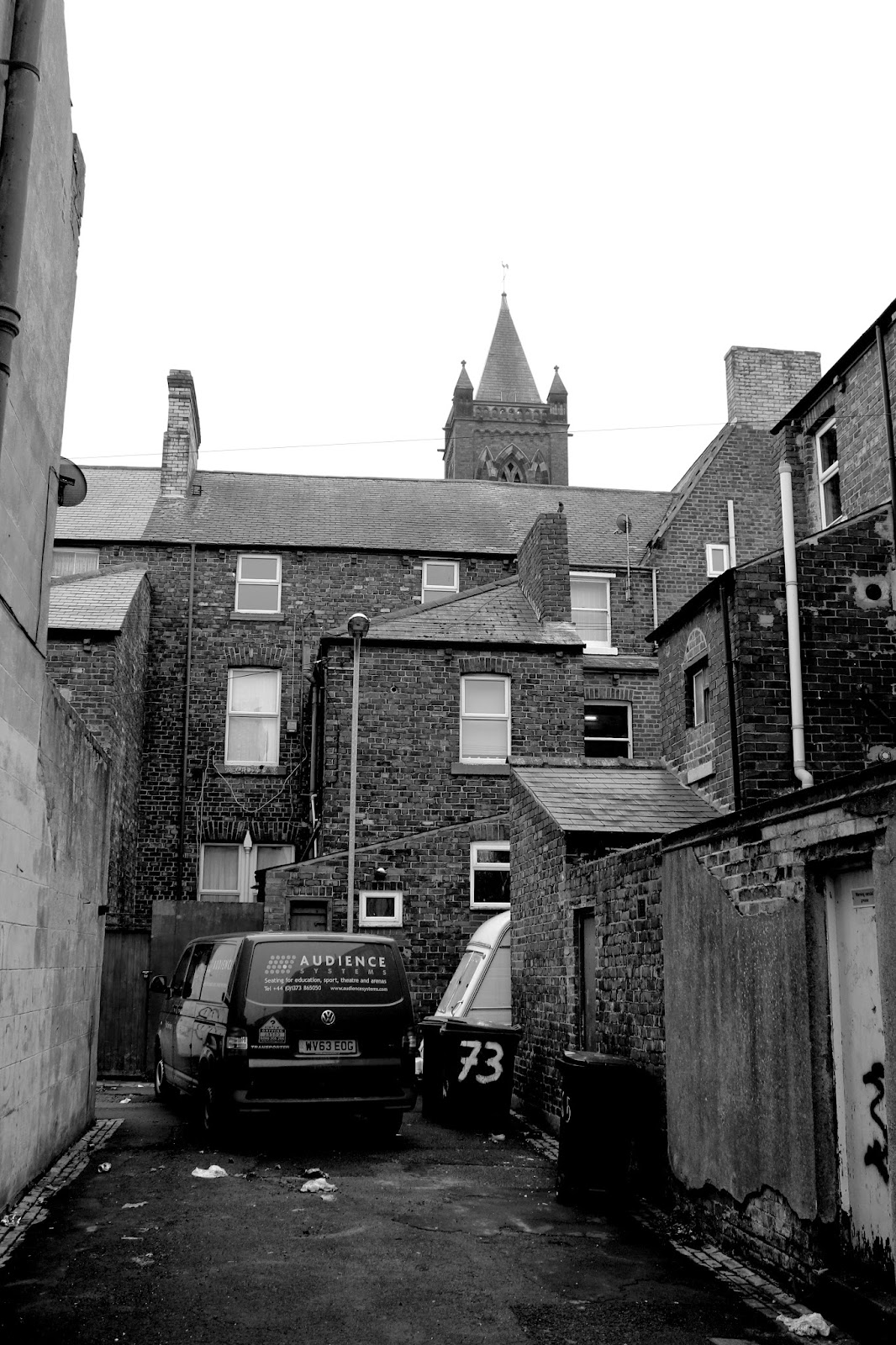When getting the
Landscape photography brief I was really exited and was rearing to go and take
bright colourful landscapes of the Yorkshire dales. It wasn’t till I actually
red the assignment that I noticed that we were going to be taking photos of
Hartlepool in black and white. It hadn’t accrued to me that landscapes were
anything other than bright cynic views. So when we walked around Hartlepool
looking for a spot to photograph I started looking at everything a little
different. I started to notice lines and what were in the foreground rather
than seeing a flat picture.
For my destination in
Hartlepool I choose to base it around my student house. This way I could keep a
documented record of my first digs on Grange Road. The 4 by 5 film camera was
exiting to use but it was clumsy and heavy to carry around so by teaming up
with someone else, it made it easier to get around. There was always a shortage
of slides as well so it seemed to take twice as long to be able to do anything.
So I went around with my digital camera first to see what I liked the look of
first so I would have an understating of what I would want to shoot when I got
some slides.
When I got hold of a
couple of slides I started by taking photos of main street at I had been looking
at some old photos and thought it would be a good idea if I could try and take
the exact same photo and look at the comparison from then and now. The only
problem was that where the photo had been taken there had been traffic lights
put up more or less right in the spot needed to take the photo. I also found
that with the excitement of using such a big camera I would always forget to
focuses the first image, witch became rather annoying but it did make me double
check everything for the rest of the day shooting.
Once I had got enough
developed negatives that I was happy with I went out one last time to push some
400-iso film at 800 just to see how it would go. I really liked the outcome and
was exited to have a go at printing it. Another equipment problem was that there were only 4
enlargers so when you got a go one you had to make it count. With never
printing as large as 12-16 it was exiting so to prevent wasting paper I would
do loads of test strips to make sure I more or less got the print right first
time. I found that the film that had been pushed needed tremendous amount of
time under the light rather that the film that had not. I was looking at about
2 minutes for the pushed film and no more than 5 seconds for the other.
By doing this project
it has made me aware that landscapes can be almost anything and by me pigeon
howling it in a certain way has opened my eyes and made me look at built up
urban areas a little different.





























